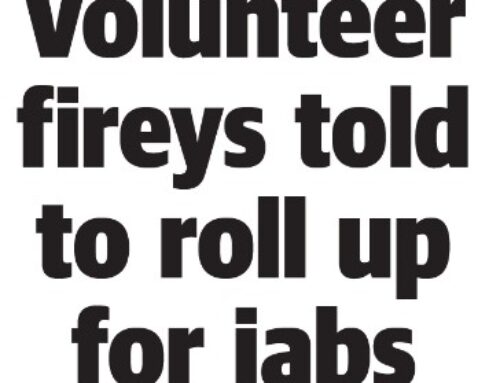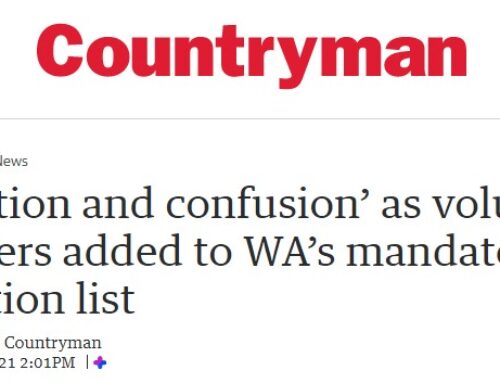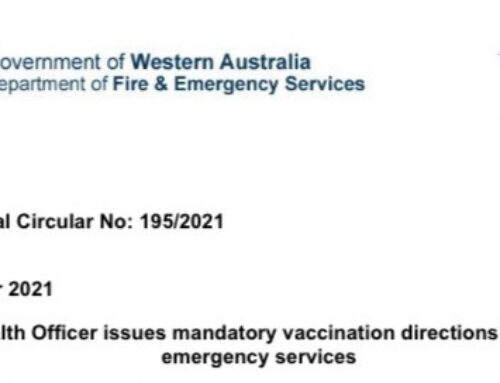State Parliament returned after the long summer break last week and the Premier’s Statement (the traditional free-range debate at the beginning of each new year) saw many Members include supportive messages for our incredible emergency services volunteers in their replies. One of the most succinct and insightful was that of the Member for Girrawheen, Margaret Quirk MLA who made these remarks we thought worthy of sharing.
We have a big year ahead and I will reflect on some of the issues that we will face in this chamber this year, and also some local issues of concern. We have certainly had an eventful summer.
I echo the words of other members to our many thousands of brothers and sisters in Queensland, New South Wales, South Australia and Victoria affected by bushfires: our thoughts are with you—likewise to the first responders, who are not only courageous, but work to the point of exhaustion. All Australians must be mindful that the psychological scars will not be as easy to address as the reconstruction of a house, a bridge or a school. Reminders of trauma will linger for many months, and even years. It will significantly incapacitate some, irreparably change the outlook on life for many, and inconveniently resurface unsolicited and unannounced. A royal commission will not do much to assist those people. What will assist is the ongoing allocation of funds raised for the medium and long-term needs of those affected by post-traumatic stress disorder. What will help is the presence of professionals within affected communities to make themselves available for counselling, as well as for the general community to conduct community-wide training in psychological first aid. This will enable others to recognise the toll of trauma in peers, neighbours or loved ones and urge them to seek professional help.
Closer to home, the fires in Yanchep required a massive effort to contain fires raging over four days and requiring another week of hard work to mop up. In the areas of peat, the fire is still alight underground. I am told that it is one of the largest fires ever in the City of Wanneroo, with a fire front of 15 kilometres running as far as Woodridge in the Shire of Gingin.
Earlier this week I received a briefing from emergency management personnel at the City of Wanneroo so that I could ascertain whether any issues needed addressing before the next major incident and which I might mention in this speech. As members are aware, in fires of this magnitude the Department of Fire and Emergency Services assumes responsibility as the incident manager. It is, however, all hands on deck, including local government brigades and the Department of Parks and Wildlife. The firefighters worked in record-breaking heatwave conditions with Perth sweltering through three consecutive days above 40 degrees. More than 6 000 homes were at risk and had been saved, despite 13 000 hectares of bush having been burnt. One residence and a petrol station were destroyed and a number of other structures and power and phone infrastructure were affected. Fencing and, of course, wildlife and parks and reserves suffered loss and damage. Hundreds of residents were evacuated or displaced with hundreds of homes being inaccessible for up to six days. By and large the integrated nature of the operation worked very well. The local government considered that at a command level a more inclusive approach would be welcomed, allowing more reliance on its local knowledge and expertise. Over the years this has been a common complaint and concern. I mention it only so that incident managers continue to be cognisant of these concerns. However, I am told that on the fire ground, optimal and constructive relationships between personnel occurred. I would like to raise a few issues in the hope that action can be taken.
As some members are aware, the area of the fire was littered with ordnance. During World War II pilots training at Pearce airbase would practise dropping unused shells in the vicinity. The effect of this is that fire crews are restricted to main roads and tracks to avoid the ordnance.
It might be appropriate to make renewed representations to the commonwealth to request the clean-up and removal of that ordnance. Animals could not be kept at evacuation centres. Smaller domestic pets were housed at council pounds, but the fees were waived. More problematical, of course, were horses. There was an incident in which three children on their own refused to leave their home under threat unless they could take their three dogs. Consideration should be given to reimbursing local government from the emergency services levy for the boarding of such animals. Better still would be to establish an online register in advance, as happens in some other states, so that people can volunteer to foster animals in emergencies.
While on the subject of volunteers, large incidents such as this one motivate others to volunteer to become firefighters. I understand that at Wanneroo dozens of people came forward but, of course, they cannot be deployed until they have been adequately trained and provided with personal protective equipment. However, to capitalise on the momentum of those volunteers, consideration might be given to additional ad hoc funding to local governments in these circumstances to put on additional training and to purchase the additional personal protective equipment
after events like this.Of particular concern were several incidents in which children were at home by themselves and crews had to run the gauntlet of the fires to ensure that they could be evacuated. I note that it was school holidays. Also, a blind man was at home by himself and his family were unable to reach him as the roads were blocked. Likewise, aged care residents were told by management, which was monitoring the situation closely, that there was no need to evacuate. However, some individuals received text messages suggesting that they should evacuate. The issues around vulnerable people who are isolated in their homes is a difficult one.
Finally, an issue raised in Keelty reports 1 and 2, and the Ferguson report, is the very real issue of a lack of coordination of communication in traffic management. That responsibility in this instance was divided between the City of Wanneroo, Main Roads Western Australia, the Shire of Gingin and the police. How is it that it is still not sorted?
Overall, the provision of water bomber aircraft, the allocation of every available appliance and crew and the experience and expertise of those managing the incident thankfully resulted in no lives lost and minimal property losses—an excellent outcome for which all those involved deserve our thanks and appreciation. More broadly, Australia-wide recent events starkly demonstrate the need for more fire bombers to be placed in Australia permanently. With climate change, fire seasons in both the southern and northern hemispheres are starting sooner and ending later. There is no longer the neat demarcation of being able to relocate and deploy a water bomber aircraft in the off season from northern to southern hemispheres and vice versa in line with chronological seasons. Now there is an overlap. For example, some of the most destructive wildfires in California in the last decade have occurred in its winter and fall: in Butte County in November 2018; Sonoma in October 2017; Napa and Sonoma in September 2015; and Ventura County in November 2018 and December 2017—the list goes on. Similarly, analysts in Canada observed that wildfire activity is increasing and fire seasons are getting longer. We can no longer anticipate that water bombers will be available when needed. We do not need a royal commission to know that. Although the federal government has already made a commitment to aircraft, an audit of whether that commitment is sufficient when fires are concurrently a threat in different states needs to be done.
Finally, on the devastation of fire, it is timely to make sure that we understand the disaster provisions of our insurance contracts. This applies to not only fires, but also cyclones and floods. Choice magazine is campaigning for a standardised definition of fire insurance. Its investigations have found that there is no standard definition of fire across insurance policies, which means that individual insurance companies are free to define fire however they like and those definitions can give them leverage to deny claims. When is a fire not a fire? According to Choice, a number of major insurers exclude damage from heat, ash and smoke if the home has not caught fire and the damage was not caused by a burning building within 10 metres. That means that scorching caused by a burning bush outside a person’s home, for example, may not be covered. It found the worst examples of confusing fire definitions and exclusions in the policies of AAMI, Apia, Virgin Money, QBE, Coles, GIO, Youi, Budget Direct and ING, which are not small fly-by-night companies. Choice is starting an online petition to the federal government to pressure insurers to treat people fairly, especially since the banking royal commission. I, too, agree with Choice that this shonky loophole needs closing.






